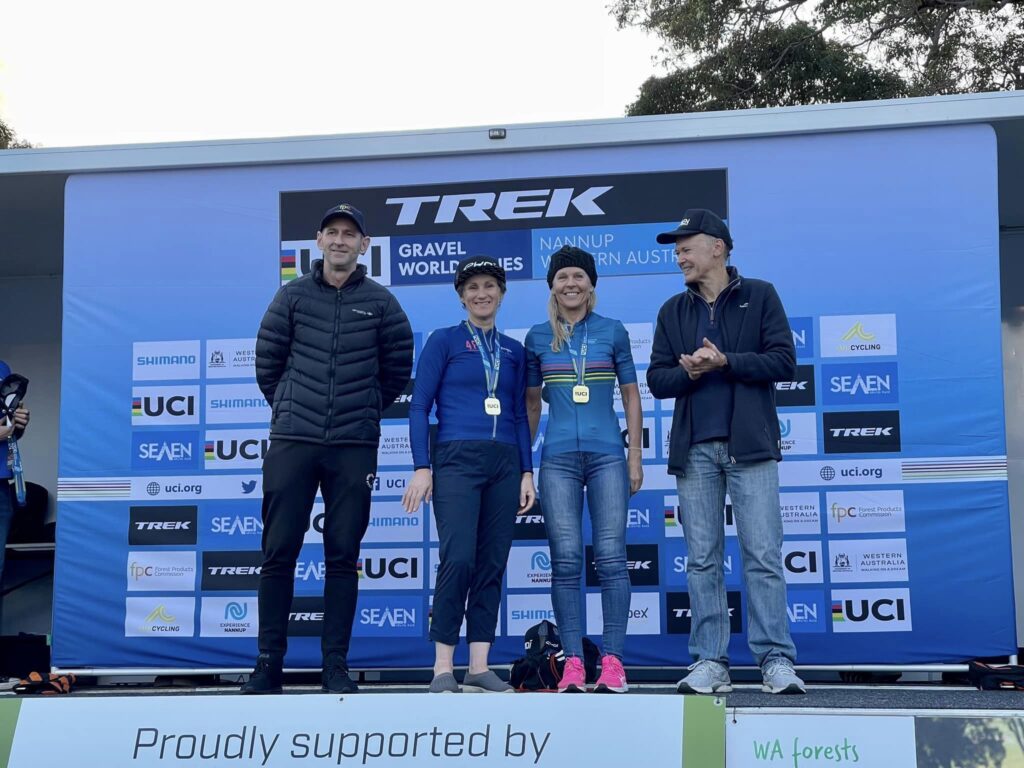Firstly, can I say that I am known for my fully geeked race reports. I am a sport scientist and data nerd after all. I’ve been thinking about this race review for a week or so now. Writing components of it in my head as I train and considering what I would include. I have decided to include the lot, including the personal and psychological stuff. On reflection it is worthwhile me doing this, even though it exposes me a fair bit emotionally. Coaches are human too, and vulnerable in just the same way as the athletes they work with. It’s important to ‘walk the walk’ as well as ‘talk the talk’. Based on this, I need to go backwards and cover off the last 12 months or so, such that this report has context. I would also like to be clear that I have no commercial relationship with any of the brands/products mentioned in this blog.
Over the past 5 years I have raced regularly on the road and of course racing has been an important part of my preparation. However last year, I managed to do one solitary race for the whole year, which was in March. Granted this was a big one, the 3 Peaks Falls Creek challenge. At 235km and 4500m it is regarded as one of the toughest one-day events in Australia. I had what most riders would regard as a good day out, though I fell slightly short of achieving my sub 9 hour goal. However, a week after Peaks I came down with COVID for the first time. Of course, that timing is likely not a coincidence given your immune status at the end of completing an event like this.
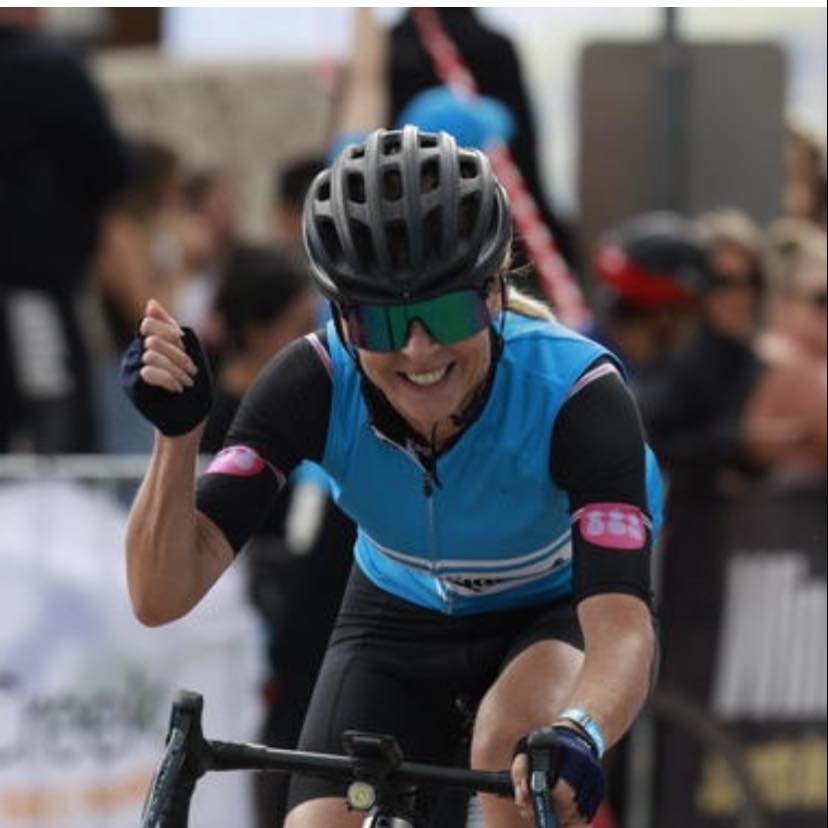
Having brought many athletes back from COVID, I was aware of the protocols in place to follow for myself. I was well read academically in this area, and a keen observer of the varied way athletes were able to come back from COVID. Despite following the same protocols, some really struggled to come back, whilst others were back training almost normally within a week. Unfortunately, I was the former. I was simply unable to absorb training. I would make a small amount of progress, then get sick again. Essentially, it felt like I caught every virus that went past me. We can debate the existence of so called ‘long COVID’, but the reality is that post-viral syndrome has been well described in athletes, long before we knew anything about COVID. So, for want of a better term, this is clearly what I had. Then followed 12 months that I can describe as complete frustration. Only those really close to me understand how challenging it was. In summary, I would say around 5 viral illnesses akin to the common cold, one full blown flu, one dose of pneumonia, myocarditis/pericarditis, and then a second dose of COVID.
I am not writing this as a ‘woe is me’ story. But hopefully so that those who have struggled with illness understand that what they are going through is real. And for those that have not, perhaps it will help you have a little empathy for those in this situation. I have been an endurance athlete for 40 years, so there was certainly no lack of willingness on my part to get better.
I had the idea in my head from the middle of last year that I wanted to do SeVen. I had read reports about it, and it ticked the boxes for me. Once I have done an epic event (Peaks, Grafton to Inverell), I rarely do it again. I look for a new challenge. Plus, I am from Western Australia and my family is from southwest of Perth, near where the race starts in Nannup. I have ridden in the area a bit, including doing the Cape to Cape mountain bike race way back in 2012. And then SeVen was announced as a qualifying event for the World Gravel Championships. I had a new gravel bike and racing on gravel felt like it should be the next iteration of my athletic career. I started as a distance runner, then I became a triathlete, then a mountain biker, and most recently a road racer. Gravel just appeared to be calling me.
Despite the fact that gravel was calling, my body was not capable of answering. I held onto the goal in the back of my head, and just kept plugging away and hoping that I would be in some position to enter the event come 2023. I had never raced on gravel before, but I started to get out regularly on my gravel bike and explore the roads around the Sunshine Coast. I have a Canyon roadie which I love. When it came to choosing a gravel bike, I figured that I may as well stick with Canyon as the geometry suited me. I opted for the top of the range Canyon gravel racing bike, the Grail CF SLX 8. I wrote a blog review of my first experience riding it on the Brisbane Valley Rail Trail (link at end). I reckon that as soon as you ride a new bike you should love it. Sadly, I never loved the Grail. I am not sure what I was expecting. It felt sluggish (despite the fact it is light for a gravel bike). And don’t get me started on the gimmicky double decker handlebars on it. Neither position on it felt right to me. I think it is telling that I did not see a single rider using one of these bikes at SeVen, including the pro riders that are sponsored by Canyon.
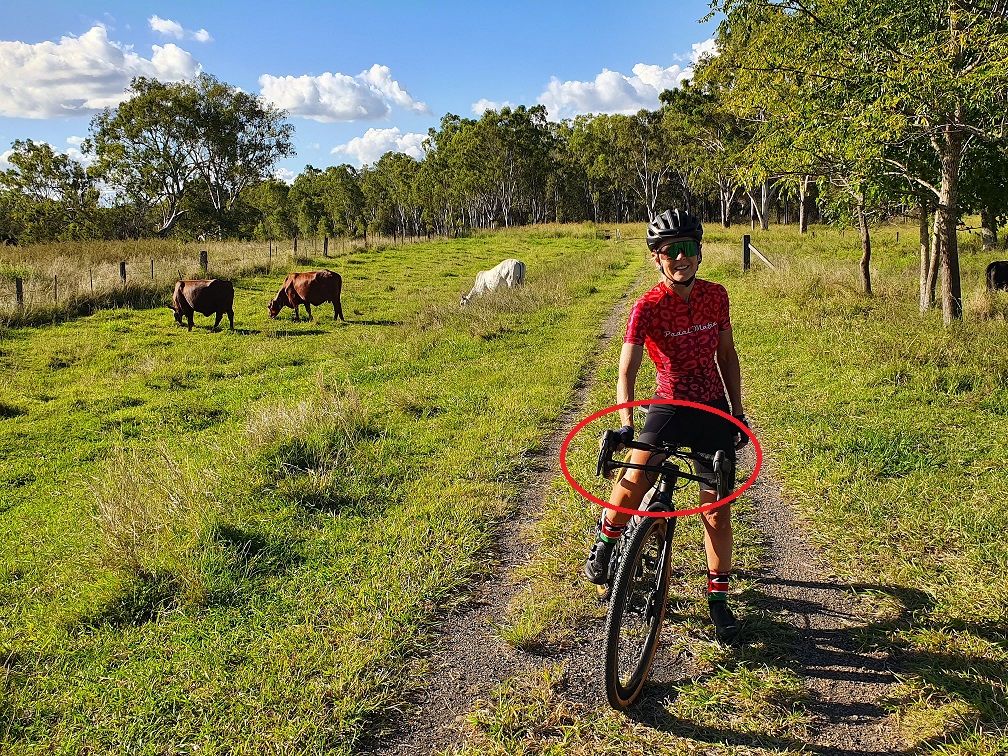
Anyrate, I kept riding it and hoping I would start to enjoy it more. And I did. But I never loved it. I knew I needed to get out and race it to really decide if it was the bike for me. I quietly targeted Gravel and Granite in Tenterfield in early March as an event. I kept this quiet as I did not want to jinx myself and target an event, only to get sick again. Thankfully I have had great support from my boyfriend Daniel across this whole shitty post COVID thing. We decided to do Gravel and Granite as a road trip with the camper trailer. Neither of us had been to this part of northwest NSW before, and the adventure part of gravel racing holds a huge bunch of appeal.
Gravel and Granite was a truckload of fun. The atmosphere of gravel is different. Loads of laid back chill, lots of friends doing the event, camping on site, and way less ‘ego’ than road racing. GnG was solid enough as a race at 105km and 1800m. I can’t give you any power data from the race, as I did not have a power meter on my gravel bike at this stage. But I can tell you that the first 50km was mostly on the granite and some non-technical gravel. At 50km in you turn into the first section of proper gravel. At this stage I said to a friend in the same bunch as me ‘can you believe we are averaging 32kph’. Well, that did not last. The average speed for the second half dropped to 18kph. I suffered. A lot. The biggest thing that I learnt is that you need to condition your body for gravel. Because the bike does not have suspension, you absorb the load in your body. There is something almost unquantifiable about the effect the vibrations have on your body. And toward the end, the biggest limiter was my triceps. Never in my cycling career did I ever think I would say that triceps would be a limiter. But it is the load of holding your bike steady and absorbing the vibrations in your arms.
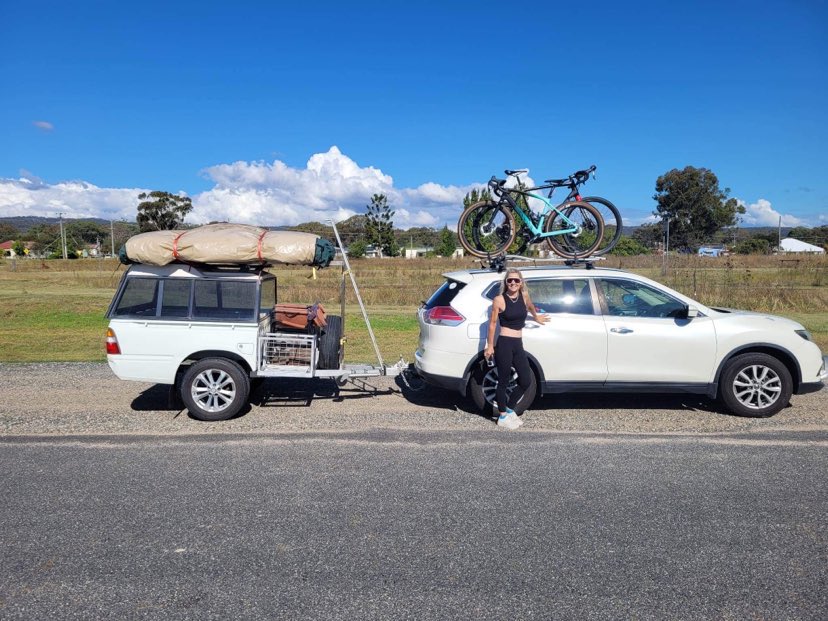
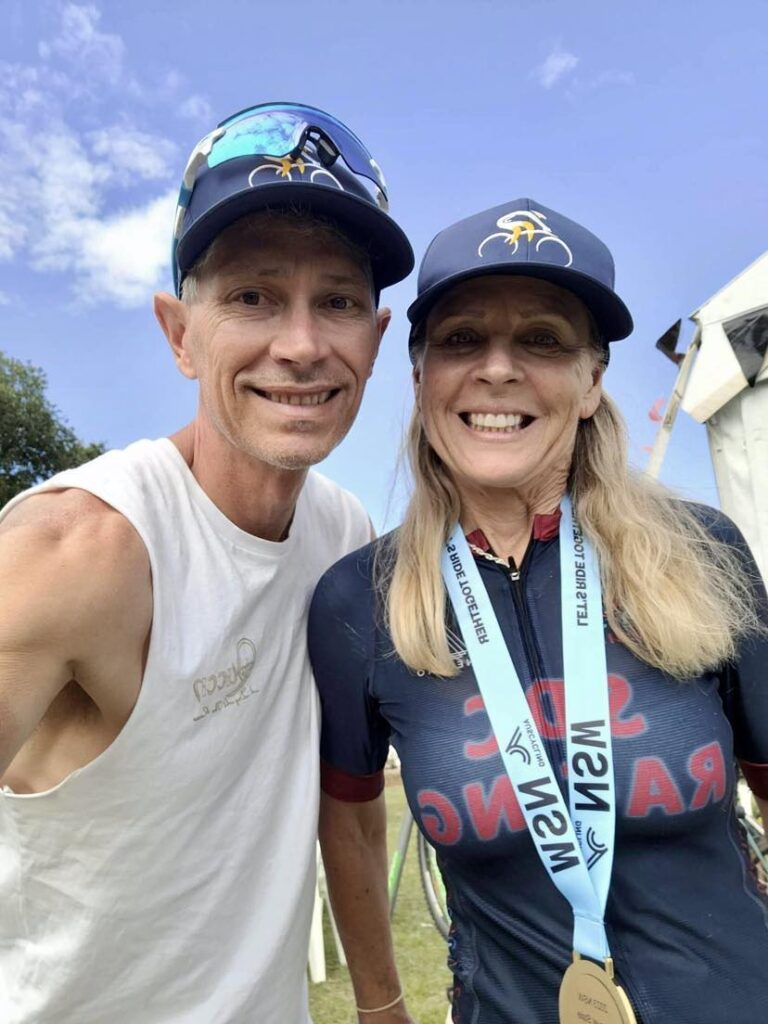
I always encourage my athletes to write notes in TrainingPeaks after an event. These are useful to reflect back on. So, in the spirit of this, I share what I wrote in my file. And this is a screengrab direct from TrainingPeaks, so you know I am not making it up.

And what of the Grail – well it was OK. But I had nothing to compare it to. How is a gravel bike meant to feel? I started to think that I might need to change it. The Cervelo Aspero 5 appealed to me, but then there is the challenge of getting one in my size. It was simply not available. Nor was anything else for that matter, but heck as cyclists you already know this story. I sat and waited and hoped that something might come up. And eventually it did, but more on that later.
It’s worthwhile covering off my preparation for SeVen. There were 9 weeks between GnG and SeVen. I knew I needed to spend a lot more time on gravel, conditioning my body. I had also reccied the SeVen course online and knew that it mostly consisted of extended climbs in the 12-15 minute range (for me). There is not a lot of ‘top end’ required for gravel racing. Therefore, given the time I had, I decided to forego a whole block of training that I would normally do for an ‘A’ event. And this was the VO2 Max block – I did absolutely no work on anaerobic capacity at all.
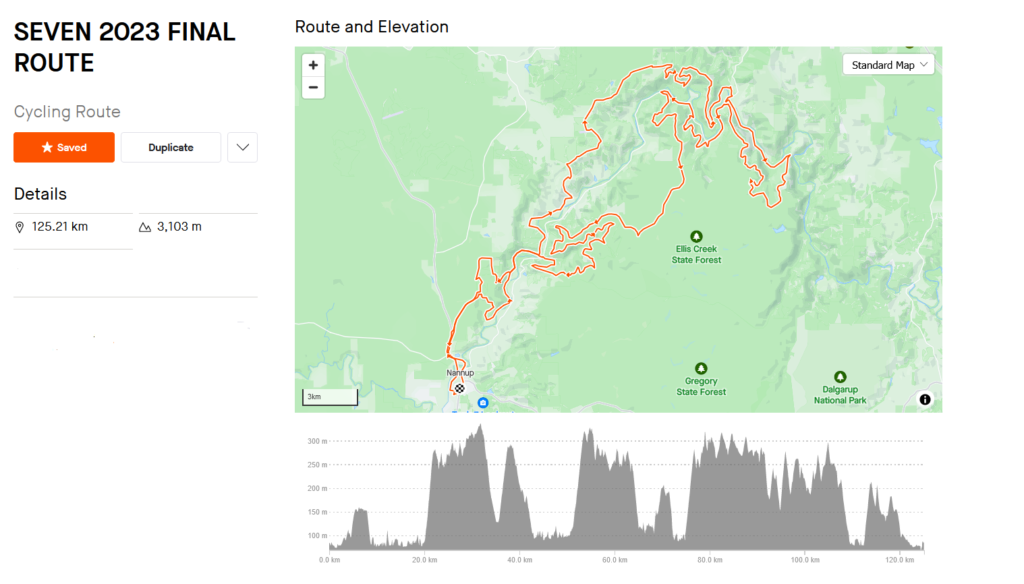
I had a couple of solid weeks of training post GnG. For those familiar with Training Peaks, these were 840 and 946 TSS for the week, which kept my CTL around the 113 mark. I then had a lighter week, courtesy of a fall on my road bike. This was an innocuous fall on a wet roundabout. I was a bit sorry and sore, but I had entered Tour De Brisbane that weekend so decided to go ahead with the race. I had broken my derailleur and hangar in the fall. My helpful mechanic took the gravel groupset off my Grail to put on my road bike so I had a working bike for the race. Unbeknown to me though, I had also broken the frame. You just could not see it under the paint. I was super nervous racing, as it was my first road race in more than 12 months. Plus anyone that did Tour de Brisbane this year will tell you that the first 40kms were pretty sketch. I knew something was not right, but I thought it was my nerves, or a lack of familiarity with racing. As it turns out my seat tube had broken through whilst I was riding. Yes I am well aware of how fortunate I am to have descended Coot-tha on that. And by the way, the broken frame made absolutely no difference to the race result. I had no ‘top end’, and this was exposed big time. The two riders that were above me on the podium totally deserved their result.
Following this I had another good block of training focused on extended climbs. I had no road bike for the next month, so had to change my training program. I did extended hill repeats on my gravel bike and continuous sweet spot work on the trainer. It was a decent combination. The trainer is good ‘bang for buck’ as you are pedalling the whole time, there is no free-wheeling, and this is pretty similar to gravel racing.
The last 2 weeks of my prep are worthwhile looking at in a bit more detail. I knew my heart rate was still high for the power I was generating. This indicated that I had lost stroke volume. The key was to get this back. And the way to do this is with strength endurance work at low heart rate and higher torque. So that is what I did. Over the course of the 2 weeks I did Alpe Du Zwift 3 times. For those not familiar with Zwift, this is a climb of about 12 kms on the trainer. Without geeking out too much on data, I can summarize and tell you that I improved my efficiency (power generated for heart rate cost) by 16% on this climb over that 2 week period.
The rest of my training consisted of tempo and sweet spot work on the trainer, and long gravel rides. I did no bunch rides at all (as I had no road bike). I’ve provided a screengrab of my TrainingPeaks for that two weeks.
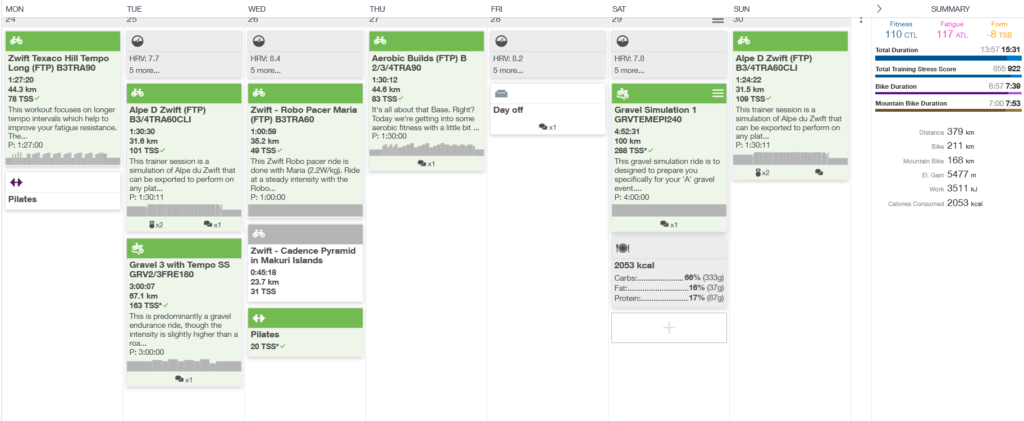
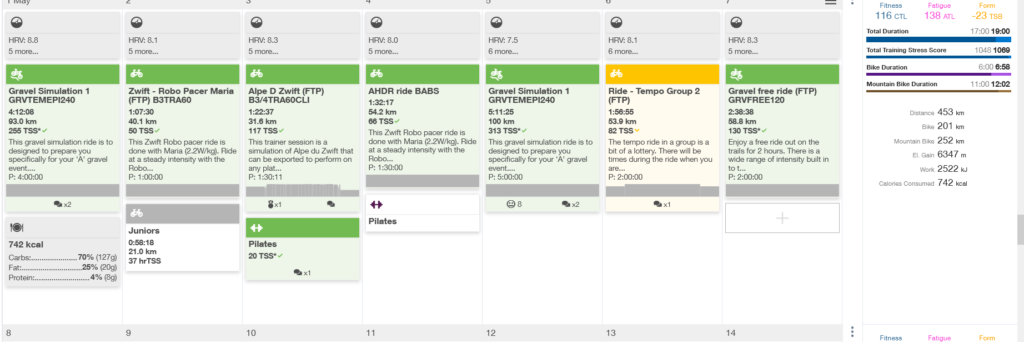
It is at this stage that I also took purchase of a Cervelo Aspero 5. One came up in my size on marketplace that was ‘new, second hand’. The dealer also took trade ins, so I headed to the Gold Coast with my Grail on the bike rack for a test ride of the Aspero. My plan was that if I liked it, the dealer would take my Grail as a trade in and I’d pay the difference between the bikes. And that is exactly what happened. I did a test ride and knew straight away that it was a better bike for me. It had more of a ‘road’ feel. I can’t really describe it, but it felt zippier and more responsive. It was slightly lighter than the Grail (0.3Kg) but felt like more than that. The groupset was identical – Shimano GR815; I like a 2x. The cockpit felt better and the bike could come up to speed faster. When I got home I went out and tested it on a couple of gravel segments on Strava. I’d given these a dig before on my Grail so I had a benchmark. I gave them a whack (well, what is a whack for me) and the bike delivered. I could see I could get my heart rate up higher straight away, and the bike was faster. It was as simple as that. Happy days.
A week before SeVen I went and did a simulation ride. I recommend a ‘sim’ ride for all athletes doing a major event. In the ‘sim’ you test everything as you would on the day. The gear, the nutrition, the clothing, the route. I mapped out a route that matched SeVen as best I could. This was an almost all gravel route up at Pomona that I had ridden a few times. There is a climb there that is around 15 minutes. I parked my car in a central spot and then set out to ride the climb 6 times, with flatter loops in between for a total of 5 hours. I took my nutrition exactly as I was planning for the race. I was never more than 6kms from my car, and the mid-point replacement nutrition was in the car. I got in 400 grams of carbohydrate for a 5 hour ride, which is 80 grams an hour. That’s good considering I only weigh 50kgs and burn roughly 500 calories per hour. This ride was pretty similar to the distance/elevation profile for SeVen which is 125km and 3000m. It is really important to point out that when you do a ‘sim’ that this needs to be done at the same intensity as the planned event. Your fuel utilisation varies with intensity. So there is no point doing it a lower intensity than you plan to race at. Therefore I did the climbs at the planned intensity of SeVen. My fatigue resistance (decrement), across the climbs was 7%. That is, #6 was done at 7% lower intensity than #1. This fatigue resistance is pretty good.
I gained a LOT of confidence from the sim ride. I knew which kit I was going to wear (big pockets). I knew I could do the ride on bidons only and did not need to wear a bladder. I knew I could get 80 grams an hour of carbs in. I was confident that 20kph was a reasonable target and therefore riding time was just over 6 hours. The bike performed well. The tyres on it were a bit thin though (Panaracer Gravel Kings in a 38). I was running 35PSI in them. Whilst this was great for climbing, the descending was a bit skittish. I did not have the traction I wanted. I considered changing the tyres, but opted instead to take a spare set of tyres over with me (Maxxis Rambler 40s) and change them if I needed to. I spent a bit of time on the WA gravel forums where this was being discussed. Honestly, it was like going down a rabbit hole that you could not get out of. There was so much energy and attention focused on it. Ultimately, I decided that spending more energy on making a decision was counterproductive. I would take the Ramblers with me, do a recce on the course the day before, and change them if I needed to. Actually, I mean ‘ask the mechanic to change them’ – because I run tubeless and am useless at doing this myself.
This takes us through to race week. I should point out here, that I was genuinely still a bit paranoid about getting sick again before the race. So much so, that I still had not told my family that I was coming to Perth. I did not want to create an expectation on my Mum’s part, that I then could not meet. I ultimately only messaged my sisters the day before I left to let them know I was coming. I called my Mum and told her and explained why I had not said anything. I knew I still had to negotiate the airport and a 5 hour plane flight. When I got an email from Qantas the day before offering me the chance to pay for the seat next to me to be empty, I happily paid the money for this to happen. And I wore a mask the whole time in both airports and on the plane. Let me tell you, not many passengers these days are wearing masks.
I arrived at Perth airport and as I stood and waited for my bike to come out of oversize my mind flashed back. In October 2017 I had made exactly the same journey to say goodbye to my father as he lay in palliative care. 5 hours on a plane with no reception is a long time when you have no idea if you will make it back in time. In 2017 my bike bag was delayed 30 minutes. As I stood and waited for it, my Dad was taking his final breaths. He died as my sister was driving me from the airport to hospital. In 2023 as I wheeled my bike bag out of the airport I thought of my Dad. There is no greater motivation for me than making my Dad proud. I knew that whatever happened in the race, I would, as always, be racing in his honour.
I was fortunate that one of my close friends, who I have known for 52 years, had organised everything at the Nannup end for us (did I mention I also coach her?). Cate had sorted transport from Perth, accommodation and food. It was so nice to have someone familiar with the area do this and I was very grateful. Friday was recon day, so out we went on the course. Cate was riding the same Cervelo Aspero 5 as me (albeit she has the really cool chameleon colourway and mine is the matte black). We rode the road neutral section and then about 10kms of the course. The trail in Nannup is not really gravel. It is more like compacted red dirt. There is very little of the pea gravel the southwest is known for. Some of you may be familiar with the Munda Biddi trail – and there is a small component of this in the course that is pea gravel. But other than this, it was mostly red compacted dirt (that clearly transforms into mud).
We went back to register and Cate introduced me to some of the race organisation staff. I asked them about the trail and tyre selection. They looked at my Panaracers and said ‘you’ll be right with those, they are good choice’. So I went with them and did not think about tyres any more. Slight mistake there, but heck, neither they nor I had any control over what happened with the weather. That night we were woken at midnight by rain, lots of it. A very heavy fall. And then again at 3am. We knew the course was going to be wet, but how wet? There was no time for a tyre change now. I just needed to run with it.
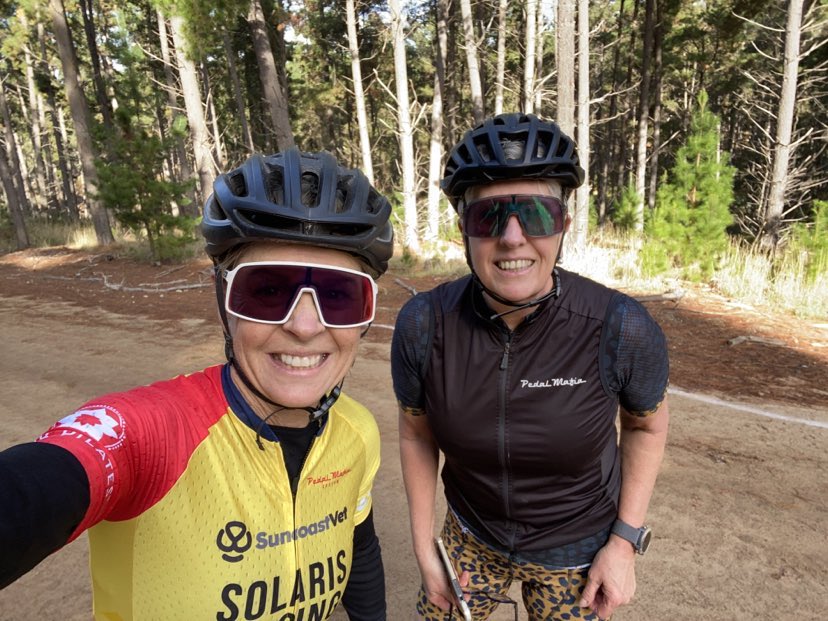
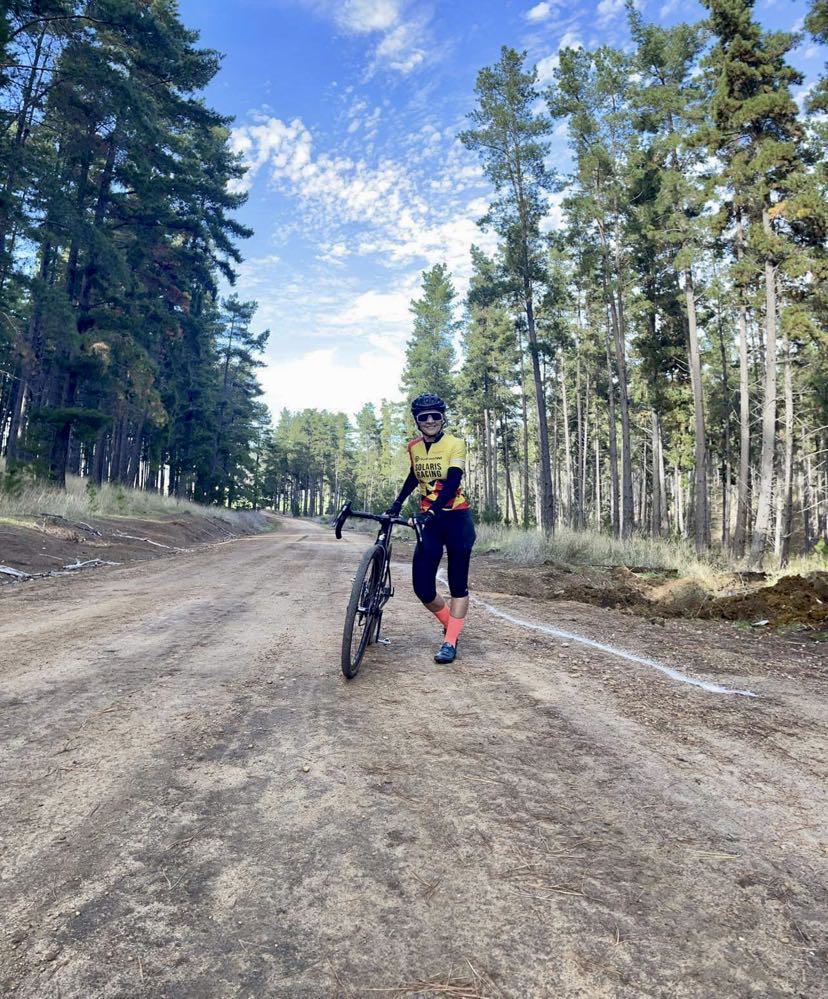
I’ll talk a little about the start as it is relevant. SeVen was the biggest gravel race ever held in Australia. There were more than 1200 riders on the start line. The organisers had fallen in line with UCI guidelines and there was an invited athlete box for 25 seeded riders. Ahead of the race you could request a place in this by emailing your gravel palmares. I never considered asking for a seeded spot. I had only ever done one gravel race and did not deserve it as far as I was concerned. So I opted for the ‘stand and queue’ approach which in the end was only about 30 minutes. Fortunately the overnight rain meant the temperatures were not that cold. It was around 10 degrees and pretty bearable as we waited.
We rolled out and I guess maybe I crossed the start line in about 100th place. But then it went nuts. We were in neutral for 3-4 kms and the pace was being controlled. Despite this, there are always idiots who have to try and get position. At the expense of others. They were passing up the kerbs and cutting in, then chopping the group behind. At one stage I locked my brakes up completely as the bunch stopped in front of me. I have no idea how I held my bike up without falling. My fellow rider Bizzy was next to me and said’ how did you do that?’. My race was nearly over before it started. Seriously, why do riders do this? There is no need. As soon as we hit the trail there was plenty of room for everyone. Do you really think you are going to stay with the lead bunch the whole day? It’s a long day, find your rhythm and settle into it.
We turned into the trail about 4km in and I knew straight away I had made what I thought was a wrong tyre selection. There was mud everywhere and the trails were slick. I was running 38s on 35PSI and this was too much. I knew I needed less pressure, but it was too risky to stop and let the tyres down. I just had to run with it. That first hour was pretty quick. I remember looking at my Garmin after an hour and we were averaging 26kph. My heart rate was at threshold but manageable. No power data (sorry). I had bought Favero Assioma pedals. However those that use these know they require a Keo cleat. I had tried these cleats but did not like them. I wanted to ride SPD cleats, hence no power. On a side note, there is a neat hack you can do to convert Assiomas so they run on SPDs. My mechanic has now done this for me, so I will have power on the gravel bike from now on.
For this first hour I was riding to and fro with one of my category competitors and friend Vanessa. I therefore knew I was going OK. We had been on the podium together at National roads a few years back, and I knew she would be in the mix as she had placed well at gravel worlds last year.
I rolled up beside her at about the 20km mark (before the first climb) and asked how she was going. I also asked if there was anyone in our category ahead of us. She kindly let me know there was one ahead. The first climb followed which is known as Brockmans. At 2kms and 8% it is a good first test and kind of sorted riders out. I felt comfortable and tempoed up the climb, having a chance to enjoy the magnificent views. The mud was next level though, and you really had to pick your lines. The descent after this was pretty hair raising. A couple of mountain bikes bombed past me, as I made my way down. It felt like I was ice skating to be honest. Almost like you were aqua planing. I watched a couple of riders make impressive entrances face first in the mud. It was genuinely treacherous.
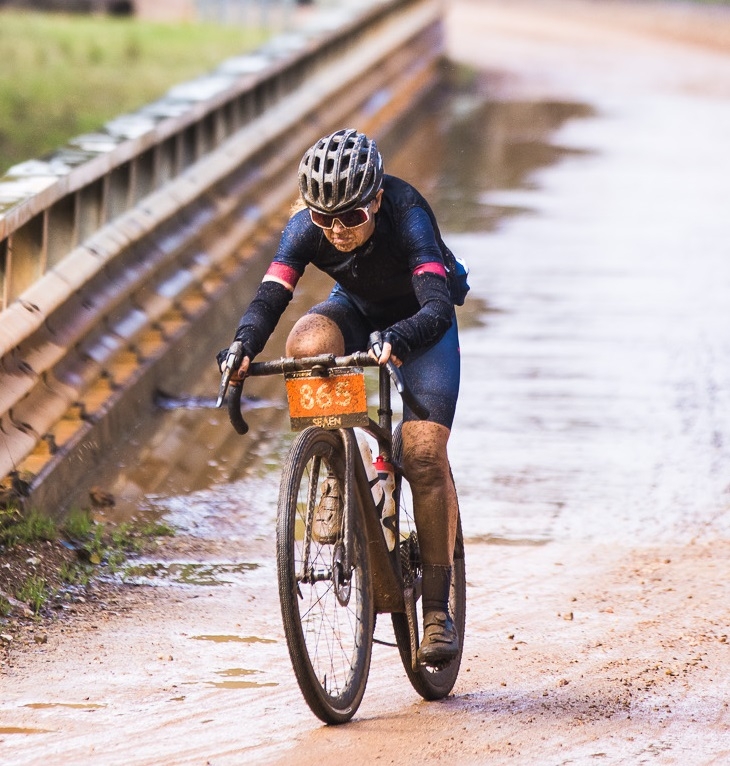
Up the second climb the mud was like riding through peanut paste. There is no other way I can describe it. Of course everyone is doing the same as you, trying to find a line that is a bit less sticky. About half way up I saw a female rider in front of me. I thought it might be my category, but it is not possible to tell from behind. So I stayed behind her for a wee while, as I wanted to make sure that when I went past I did so decisively. As I did, I took a quick glance at the colour of her race place. Yep, same as mine. There is my competition. I continued to tempo up the climb and did not look back. I was confident I was climbing OK, but Vanessa had told me she was a great descender. Sure enough a few kms up the trail she descended back on to me. And so it went for the next 20 kms or so. In my head I was working over my race plan. I did not want to take risks on the descents. I decided that it was best to back my climbing. If she was still with me at the end, I could take risks on the descent, but only if I needed to.
At this stage equipment became key. And everyone was in the same situation. My bike was covered in mud, the derailleur was clogged and nothing was working properly. I was only carrying Beta Fuel in my bidons so did not have any water to rinse my cassette. I just had to put up with it. At one stage I thought my chain may break it was under such load. On reflection I should have stopped at one of the aid stations and asked for water. But I was aware that water was for drinking, not for bike washing. I came into the special needs station at the 68km mark which was just over halfway. I had prepared two bidons of Beta Fuel to place in here. It was a very quick change. I racked my bike, replaced the two bidons and took off. It would have been a minute or so. As I left special needs I saw my competition coming in. I reckon I had about a minute’s lead at that stage. I passed the mechanic station and here is where I made an error. I should have pulled in and cleaned my cassette and drivetrain. But I was running scared, and I did not. In retrospect it would have saved me more time if I did this.
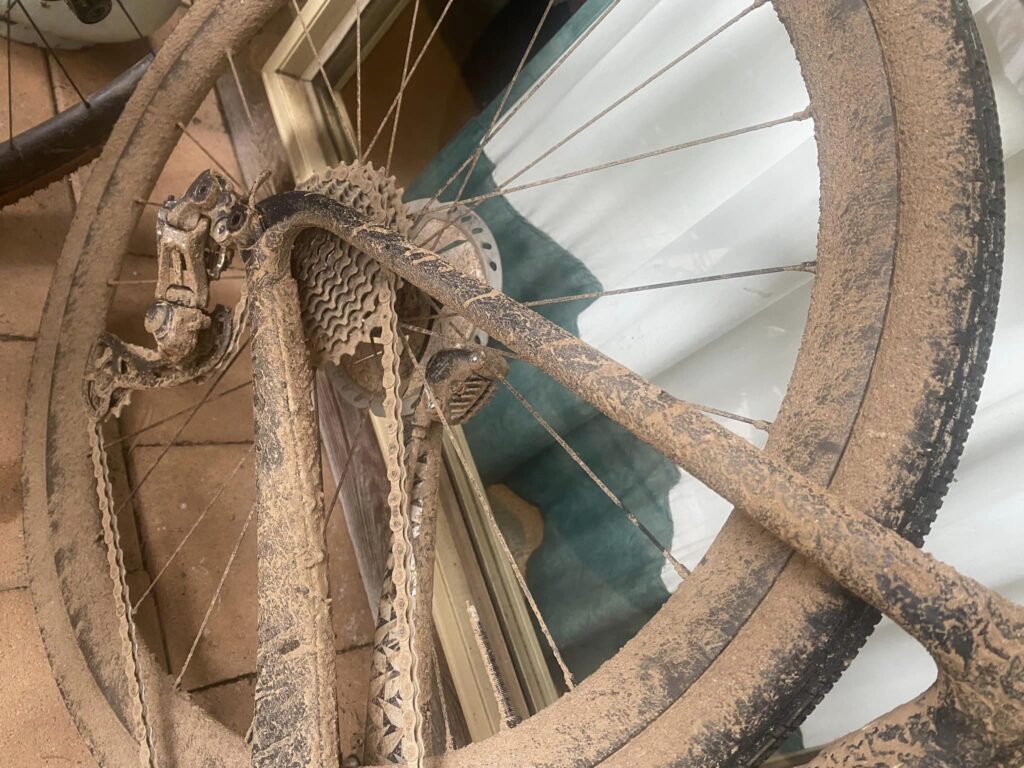
I went up the next climb labouring. My drivetrain was so clogged, it was under too much load and every pedal stroke was more work than it should have been. Finally at the top of the next climb I decided to pull in for water to clean it. I apologised to the volunteer and asked her to pour the jug of water on my cassette. She said to me ‘don’t worry, everyone is doing it’. And I smacked myself as I should have done it earlier. I knew I was in front but I did not know by how much. I decided to stick to my race plan. That is, just keep tapping away. Do not do anything stupid and back yourself on the last climb if you need to. At this stage it started to rain. And it was cold. And I was saying to myself ‘FFS, are you kidding me’. But I stuck to it, knowing that I can back end a race. The longer it goes the better I get (relative to others). 40 years of endurance training helps a lot when it comes to fatigue resistance.
The final climb that they put in was simply cruel. Apparently it was a new climb this year. The courses had merged at this stage (with riders from 3 and 5) so it was challenging trying to find a line and pick your way through. I reckon when I went up it around three quarters of the riders were not riders, they were temporarily walkers. I cramped a little bit, just those first twinges you feel in your adductors. But I told my legs to shut up. I knew I had fueled well and that I just had to push through the last 10kms which was a net downhill.
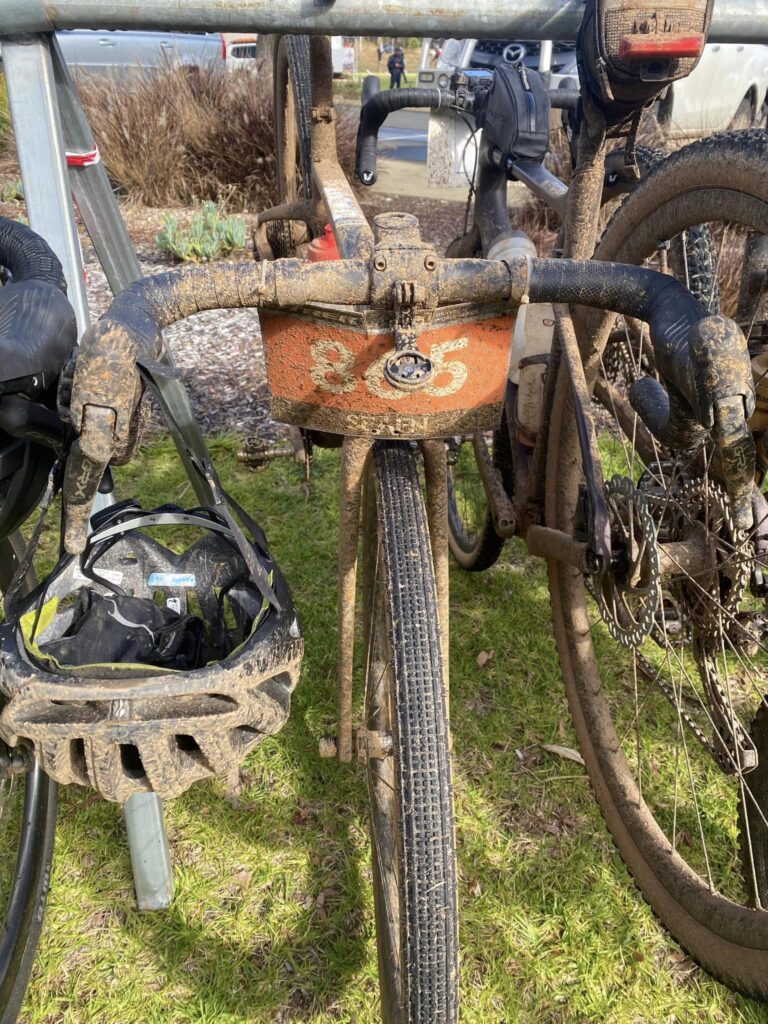
It is worthwhile touching on the fueling here. I took in just over 500 grams of carbohydrate in the 6 hours and 20 minutes of the ride. This is 82 grams an hour which is in line with my simulation ride. I took this predominantly from Beta Fuel in my bidons. I find a quality dual source carbohydrate in my fluids is the best way for me to get my carbs in. Choose your fueling, test it, and stick to it. I topped up with Beta Fuel gels and Clif bloks. I had these stuck to my top tube. Of course they got covered in dirt. But I worked out I could swirl the blok around in my mouth to remove all the dirt to one side, then spit it out. The things you do when you have to.
I zipped down the last descent as best I could. I am normally a pretty good descender, but I do wonder what it would have been like with a slightly wider tyre and a bit less pressure. The last 5kms you hit the only section of the Munda Biddi trail in the race. This is single track and pea gravel. It was exhilarating. I was still running scared not knowing how far behind my competition was. It was totally worth the whole trip for this 5km of fun.
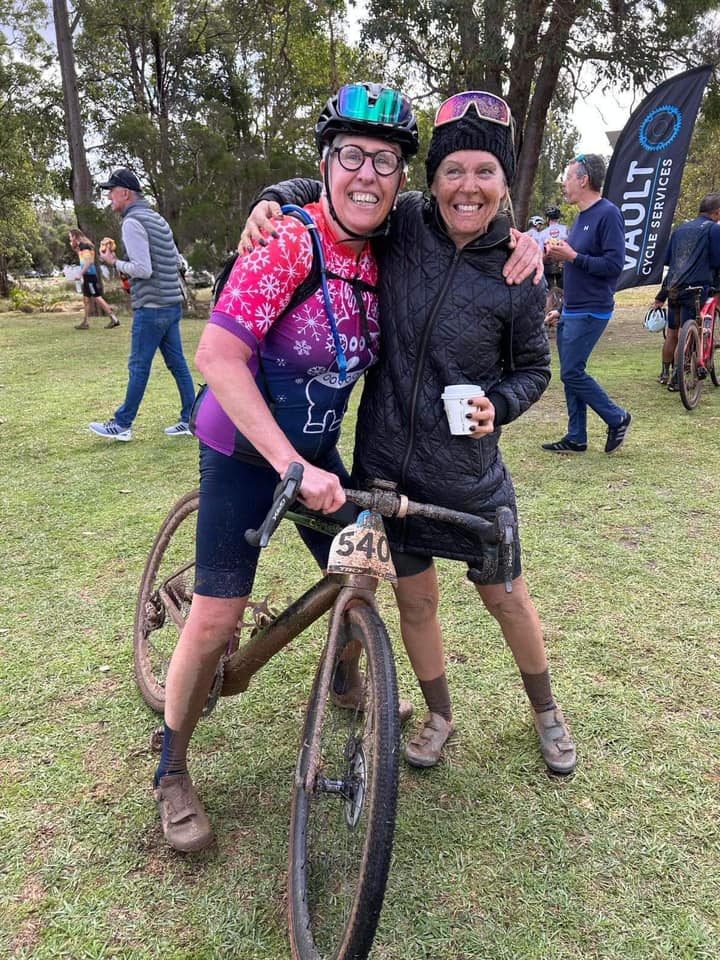
Before I describe the finish I’d like to reflect on the training. Was I the fittest I have been in the past 5 years? Well I guess it depends how you define fitness. My FTP has been around 200W (on 50kg) for the last few years. Before I got sick, I won 7 National Masters Champs on the road in 3 years on that FTP. But I prepared specifically for those events. I had that FTP, but I also had anaerobic capacity. I had ‘matches’ to burn when I needed them. I definitely did not have any matches leading into SeVen. I remember thinking that I was prepping riders I coach for a 2 hour road race in Queensland (Metro champs) and how hard it was going to be with gnarly hills. I was actually relieved that I was going to do a 6 plus hour event instead of Metros, as I would have been woefully exposed physiologically.
Training is not just about FTP. Sure, we can think of it as the lowest common denominator. As in, when riders ask ‘what do I need to work on?’ The answer is nearly always, improve FTP. But there are variations of this – you can raise FTP and/or you can extend the amount of time you can hold FTP. On top of this, fatigue resistance is key. How well can you hold that FTP when you are 2000kj into an event. That is another story altogether. Then add to this, anaerobic capacity; and we have a completely different picture. I prepped specifically for SeVen given the time I had available. Could I have been fitter? Absolutely. Did I learn a lot? Yes, heaps. Am I motivated to stay racing on gravel – you bet. And now I have the power meter on the gravel bike I will be able to answer those questions about fatigue resistance. By the way, my feeling is that if I had to guess I reckon I would have done the entire race at about 75% of FTP. And my back end climbing power would have dropped perhaps 7-8%. But that is my feeling only, and I am looking forward to quantifying this moving forward.
What would I change in terms of equipment? Well I was pretty happy with the bike. I have covered off the tyres and the pressure. Moving forward I am investing in a second set of wheels. The Aspero comes with Reserve 32 DT350 as standard. I am getting a custom built set of gravel wheels from Craftworx – Gnarly 26 with DT Swiss 350 SP hubs. The other thing I am changing is my shoes. I wore Shimano XC502 for the race. These are super comfortable, but I have always felt the sole was not as stiff as I would like. I bit the bullet and ordered S-Works Recon gravel shoes. I wear S-Works road shoes, but the $650 price tag for the Recons was putting me off. It will be interesting to see if they are worth the investment.
And so to the finish – the last couple of kms you come in the back of Nannup and then circle into the finish line. I am not sure what I was feeling here. I know I was thinking ‘it is not over til it is over’. Bike, please do not let me down now. It was not until I crossed the line that I relaxed. The feeling, honestly, was relief. And for me that is nearly always the case when I am at a major event. Relief that I have made it through safely. Relief that I have achieved the goal I set myself which was to qualify for the world championships. Relief that I have met the expectations that I feel others have of me. Relief that I have held true to the mantra of ‘walking the walk’. And finally, a moment of reflection and gratitude. To be out there again, competing and doing what I love. I have never taken this for granted, and never will.
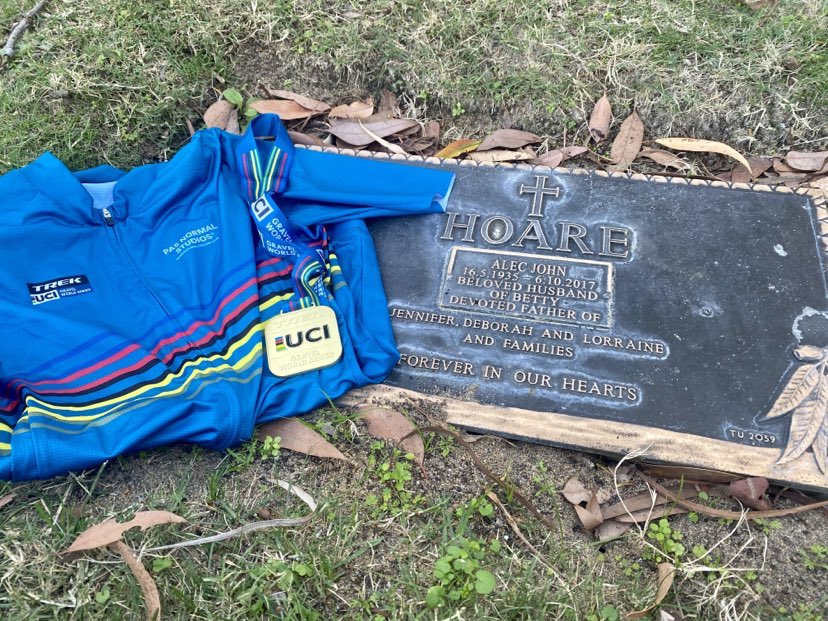
Acknowledgments – I would like to thank the organisers of SeVen for putting together such a fantastic race. It was all it was made out to be. Without doubt it is the premier gravel event in Australia and they have worked hard for it to reach this status. I would also like to thank my friend Cate Wray for helping so much with organisation on the Perth side. I appreciate it so much, but even more I appreciate our friendship of 52 years. To my friend and our senior coach at Spin Doctor Coaching, Liz Nelson – thank you for your support and listening whenever I needed to vent over the past 12 months. And to my boyfriend Daniel Murphy, thank you so very much for tolerating my need for routine and control. For offering me unconditional support, and coming out to train with me whenever I needed. I love you longtime.
Link to blog Canyon grail review – http://spindoctorcoaching.com.au/brisbane-valley-rail-trail-on-a-gravel-bike/

